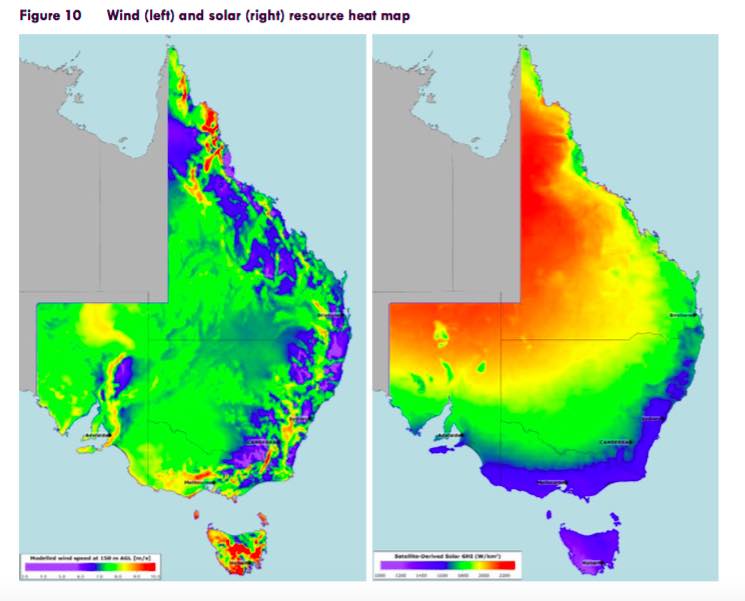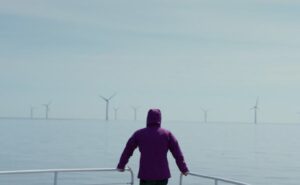The Australian Energy Market Operator has kicked off a ground-breaking major new study in how to plan for Australia’s future grid, and in doing so has effectively thrown down the gauntlet to the government on its climate and technology assumptions.
In a discussion paper released on Tuesday in the first step of putting together an Integrated System Plan (ISP) by the middle of 2018, AEMO says the future grid will be dominated by wind, solar, and battery and other storage, and it time to put together a co-ordinated plan.
AEMO is also dialling in emission reductions cuts far beyond that contemplated by the federal government – including a “fast track” scenario that doubles climate ambition by 2030. The long-term emission cuts are assumed to be 70 per cent and 90 per cent in 2050.
The idea is to outline the major issues for the electricity system – how to incorporate the estimated 30GW of wind and solar that could be added over the next 20 years – and what extra transmission, storage and distributed energy might be needed to enable this to happen.
The discussion paper makes certain things very clear: wind and solar are the cheapest form of bulk storage, and planning must be done now to understand, and implement, the cheapest ways of incorporating this into the grid, and the best place to site them.
“NEM planners must prepare for and manage a rapid transformation of the power system, currently projected in the 2030s but which could occur earlier or later, as ~10 GW of coal generation is projected to retire,” the AEMO discussion paper says.
“The economics of wind and large-scale PV are projected to drive combined new generation of up to 25-30 GW by 2037,” as existing coal generation retires.
The ISP can be seen as a mini white paper on energy, and also as the first tangible sign that not energy institutions are in lock-step with a minimalist approach to emissions reductions and technology change.
In contrast to recent government energy white papers, which ignored climate, AEMO sets at the very minimum a 70 per cent cut in emissions by 2050, and includes a “fast change” scenario that aims for a 52 per cent cut by 2030 (rather than 26-28 per cent), and a 90 per cent cut by 2050.
“In the absence of emissions reduction targets beyond 2030, AEMO is proposing to apply an emissions reduction trajectory consistent with the Australian Government’s broader commitment to the COP21 Paris agreement to limit global mean temperature rise to 2°C,” it says.
And it cites the CSIRO Low Emissions Technology Roadmap, which found that for the broader energy sector to meet a proportional target of 26-28 per cent emissions reduction by 2030, electricity sector emissions may have to reduce by 52-70 per cent by 2030 and 90 per cent by 2050.
The Coalition government, on the other hand, has instructed the Energy Security Board, of which AEMO chief Audrey Zibelman is a member, to assume a cut in electricity emissions of just 26 per cent by 2030, around half of that seen as necessary by the CSIRO and other analysis.
“AEMO intends to apply an emissions reduction constraint of 52 per cent by 2030 and 90 per cent by 2050 in the Fast Change scenario for the ISP,” it notes (and on the same day that a government report found Australia behind on its emissions and still with no policy to tackle them).
And in contrast to other energy institutions, there is no mention of the lights going out, and no mention of the fictional character known as DB (“dispatchable base-load”).
Instead, the focus is on “firm” and “dispatchable” and “flexible” generation, and the underlying assumption is that this will come from a portfolio of renewables, demand management and energy efficiency and various forms of storage such as batteries, pumped hydro, and solar thermal.
It could also come from household battery storage.
And, possibly prompted by the report into storage commissioned by chief scientist Alan Finkel, AEMO is to launch a new study to see how that battery storage can be harnessed for the benefit of the grid, and meet system peaks, rather than just individual householders.
To do that, it will model two “aggregation trajectories” that could see 45 per cent of new household storage linked and potentially working together, and another with 90 per cent.
Finkel’s report said in theory, all the storage needed to balance wind and solar could come from household batteries, and this so-called “distributed energy resource” , along with solar, features prominently in the AEMO discussion paper.
The ISP will also focus on the the creation of renewable energy zones (REZ) that AEMO expects will be scattered across the country, looking to best exploit the local resources, provide a degree of self-sufficiency for the local region, and be connected with other REZs.
It makes it clear that the economics of wind and large-scale PV will win out over other technologies. It expects 25-30GW of new generation by 2037 – which is more than double that contemplated in modelling for the National Energy Guarantee for 2030.
AEMO’s expects energy storage (either pumped hydro or battery storage) to reach 10 GW of maximum output and 20 GWh of storage capacity by 2037, although most of this will occur after 2030.
“The provision of firm and flexible dispatchable capability in future will depend on the relative cost trajectories of pumped hydro, batteries, solar thermal, and (including fuel costs and limitations), GPG (gas) and coal generation,” it notes.
But, it adds, an accelerated cost trajectory for concentrated solar thermal generation could replace a portion of the solar PV and energy storage capacity.
This storage, in whatever form, will be used to smooth aggregate wind and PV generation across the NEM, reducing the need to dispatch higher marginal cost generation such as gas peaking plants at times when the renewable resources within a region are not available.
It also wants to focus on maximising fuel resources, and warns that concentrating too much renewable generation within an area can lead to diminishing return on further generation development.
It also seeks to explore the potential of energy efficiency, demand management, and the increase in solar PV – between them, they could cut 60Thw – or nearly one third of estimate annual demand – reducing the need for new generation.
Demand management, or load shifting, can also shift demand away from peak demand periods, when the power system is most utilised, and into periods during the middle of the day in regions with high PV penetration.
The discussion paper notes that while large scale solar and wind are now the cheapest forms of new bulk energy generation, cost reductions will continue.
It also notes that the land area required to develop up to 30 GW of new wind and PV generation equates to less than 0.5 per cent of farming land in mainland eastern Australia (New South Wales, Queensland, and Victoria).
Its focus on REZs is also interesting, and it notes that many potential REZs areas appear to align well with transmission development projects already under consideration,
These include:
- Eyre Peninsula in South Australia;
- The route in ElectraNet’s proposed transmission line through South Eastern South Australia to SouthWestern New South Wales38.
- Western Victoria, where AEMO is undertaking a Western Victoria Renewable Integration regulation investment test (RIT)
- Far North Queensland (Queensland Government’s Powering North Queensland Plan).
- Tasmania’s Battery of the Nation Project.
- New England Renewable Energy Zone in Northern New South Wales.
- Potential for co-locating wind generation near the proposed Snowy 2.0 project.











